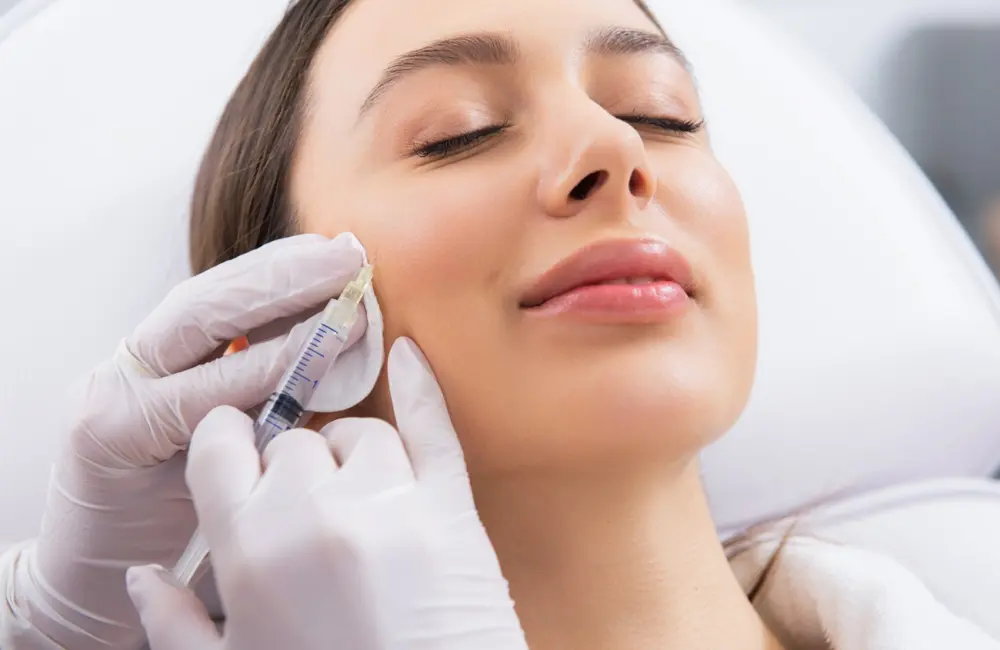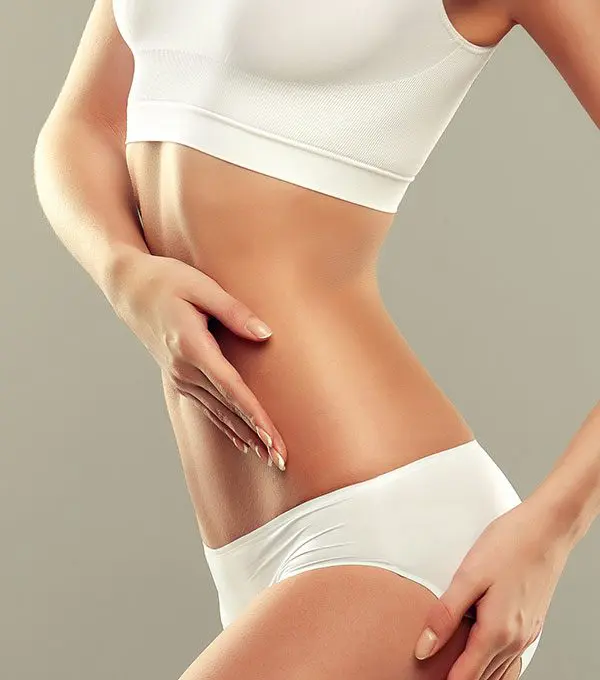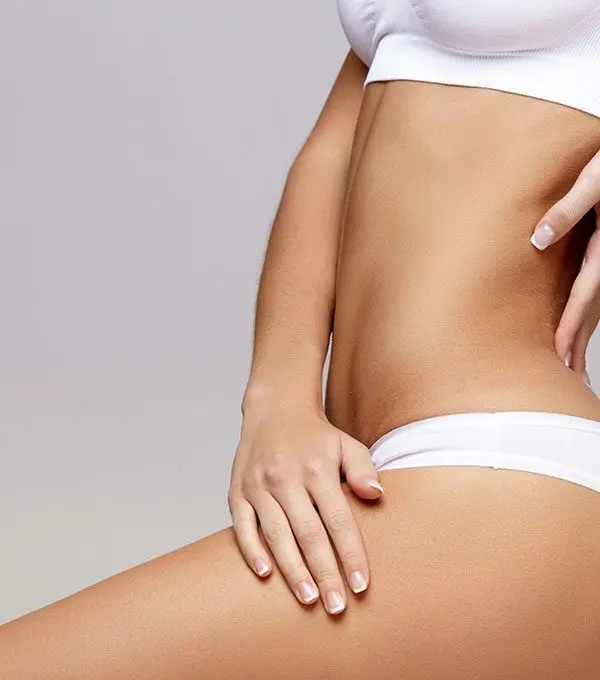Botox
What Are Cheek Fillers?
Cheek fillers are a popular cosmetic treatment that aims to improve the contours of the face by restoring volume and creating a more youthful appearance. This non-surgical procedure uses injectable dermal fillers to lift and define the cheeks, smoothen out wrinkles, and correct facial asymmetry. If you want to increase volume in naturally flat cheeks or replenish lost volume caused by aging, cheek filler is a versatile and low-downtime cosmetic treatment.

In this article, we’ll look at what cheek fillers are, the benefits of cheek fillers, the procedure, the risks and recovery for cheek fillers — everything you need to know to make an informed decision about your treatment.
What is cheek filler?
Cheek filler is a non-surgical cosmetic procedure where dermal fillers are injected into the cheeks to add volume, shape, and definition. The filler usually contains hyaluronic acid, a substance the body makes naturally that helps keep skin hydrated and elastic. Cheek fillers can improve facial balance, fill in lost volume (which creates a more youthful, contoured look) and smooth out wrinkles.
This process is relatively fast, has little to no downtime, and is minimally invasive, which makes it a common option for those looking for slight yet obvious improvements to their facial features without undergoing surgery.
The different types of cheek fillers
There is not one type of cheek filler (or filler in general,) and each has its own benefits. The most popular are hyaluronic acid-based fillers, including Juvederm and Restylane, which are favoured for their ability to add volume and hydration yet deliver natural-looking results.
Calcium hydroxylapatite (Radiesse) is another option with great effect in such cases, with longer-lasting results, while also stimulating collagen production. Poly-L-lactic acid (Sculptra) gradually adds volume to the face over time.
Each filler is unique in texture, duration and depth of injection, enabling practitioners to customise treatments to specific needs and desired outcomes.
What does cheek filler do?
Cheek filler adds lost volume to the cheeks to shape and define the area. It assists in lifting sagging skin, smoothing wrinkles, and providing better symmetry in the face, giving the face a more youthful and balanced structure.
Cheek fillers can also give definition to the natural contours of the face by adding volume in areas that may have hollowed out or sunken due to ageing or genetics. The procedure can also soften deep lines around the nose and mouth. All in all, cheek fillers offer delicate but impactful enhancements that enable people to obtain a refreshing and rejuvenating overall appearance while avoiding surgery.
The cheek filler procedure: How does it work?
Cheek fillers, or cheek augmentation, is the method of injecting dermal fillers in your cheek to restore lost volume and enhance the contour of the face. The process usually starts with a consultation to review the patient’s facial structure and desired outcomes. Topical numbing cream or local anaesthesia is used to keep you comfortable throughout the procedure. It is then expertly injected into targeted areas of the cheeks through thin needles.
This normally takes 30-60 minutes, depending on the area you are treating. Results are seen right away, with minimal downtime, though there may be temporary swelling and bruising.
Before cheek filler treatment
A consultation with a qualified practitioner is essential before any cheek filler treatment to discuss your aesthetic goals and evaluate the structure of your face. The practitioner will check your medical history, noting any allergies or pre-existing conditions to confirm you’re a good candidate for the procedure.
It’s recommended that you omit blood-thinning medications, alcohol or supplements for a couple of days before your treatment to avoid bleeding, bruising or swelling.
Some people say that their practitioner will also recommend avoiding certain skincare products that can irritate the skin. You will have the area cleaned, and a numbing cream will be used to enhance comfort during the procedure.
During cheek filler treatment
Cheek filler treatment starts with applying a numbing cream or local anaesthetic to feel comfortable. Using fine needles or a cannula, the practitioner will then inject dermal filler into certain areas of the cheeks. The filler is strategically injected to add volume, elevate the skin, and form a smooth contour.
The injections are relatively quick — about half an hour to an hour, depending on the area being treated. The practitioner may massage the area that was just treated to verify the filler does not settle unevenly. This step has little discomfort, and most patients feel minimal pain during the procedure.

After cheek filler treatment
Patients can usually return to their regular activities immediately after a cheek filler treatment, although there may be some redness, swelling, or bruising at the injection sites. Side effects typically go away in a few days.
To minimise swelling, patients are instructed to avoid vigorous exercise, overheating, or drinking alcohol for a day or two. In certain situations, you can even put ice packs on them to reduce swelling. Results are seen right away, with optimal effects coming to light after a few days as things swell down and the filler settles.
The benefits of cheek filler treatment
- Improves the shapes of the face and provides a more youthful appearance.
- Adds volume to the cheeks, lifting drooping skin and smoothing out wrinkles.
- Reduces hollow areas, giving the face a more symmetrical appearance.
- It is a non-surgical treatment with little recovery time.
- It gives natural-looking results that work well with individual facial features.
- Can be configured to achieve specific aesthetic objectives.
- Encourages collagen formation with specific fillers for long-lasting skin benefits.
- Increases self-confidence with subtle but noticeable improvements with no surgery required.
The risks/common side effects of cheek filler treatment
- Temporary swelling, bruising and redness at injection sites.
- Some slight discomfort or tenderness in the treated area.
- Occasional lumps or irregular results that can be fixed.
- Infection, not common if you follow the aftercare.
- Mild allergic reactions to the filler material.
- Minor risk of vascular occlusion, which can impede blood flow and harm skin.
- Asymmetry or overfilling, which can be corrected with additional treatments.
How long do cheek fillers last?
Cheek fillers are usually effective for 6 to 18 months based on the filler type, location treated, and before and after factors like metabolism and lifestyle. Most hyaluronic acid-based fillers, including Juvederm and Restylane, tend to last for 6 to 12 months, while other fillers, such as Radiesse or Sculptra, can last you even longer (18 months or more).
The volume and lift will decrease as the body slowly metabolises the filler over time. Subsequent treatments are suggested to keep the results. Regular touch-ups can keep the face looking youthful and contoured.
How to maintain cheek filler results
Don’t sunbathe too much, as UV rays will degrade hyaluronic acid fillers quickly. This, in turn, keeps the skin supple and elastic, while consistent consumption of antioxidants and vitamins through a balanced diet promotes sustainable skin health. Regular skin care, such as gentle cleansing and moisturising, can help prolong results, too.
Refrain from smoking and drinking too much alcohol, as such activities will lead to premature breakdown of the filler. Booking subsequent treatments as your practitioner advises after the initial treatment means your cheek contours will remain juicy and refreshed for longer.
How long does it take to recover from cheek filler treatment
Most people return to their usual routine right after undergoing the treatment, as recovery from cheek filler is usually fast. Slight swelling, bruising, or redness can occur around the injection sites, but these side effects tend to go away within 1 to 2 days. After 1 week, the swelling and bruising completely resolves, and so begins a process of healing and recovery.
Most patients can return to work or social activities immediately, although vigorous exercise, excessive heat and alcohol should be avoided for 24 to 48 hours to minimise swelling. Results can be seen immediately, with final results occurring once swelling dissipates.
Choose Botonics for cheek enhancement treatment
Our team of expert injectors employ the most advanced techniques and premium dermal fillers to add volume to facial contours and restore youthfulness. From consultation to the final result, we at Botonics value your safety and comfort and will work around your aesthetic goals.
Minimising your downtime and providing the most effective aftercare for maximal results is something we are experts at. At Botonics, we offer safe and professional treatment to add volume, lift and restore sagging skin and improve symmetry and beauty tailored to a patient’s needs and natural beauty. Contact us today to book a consultation.







